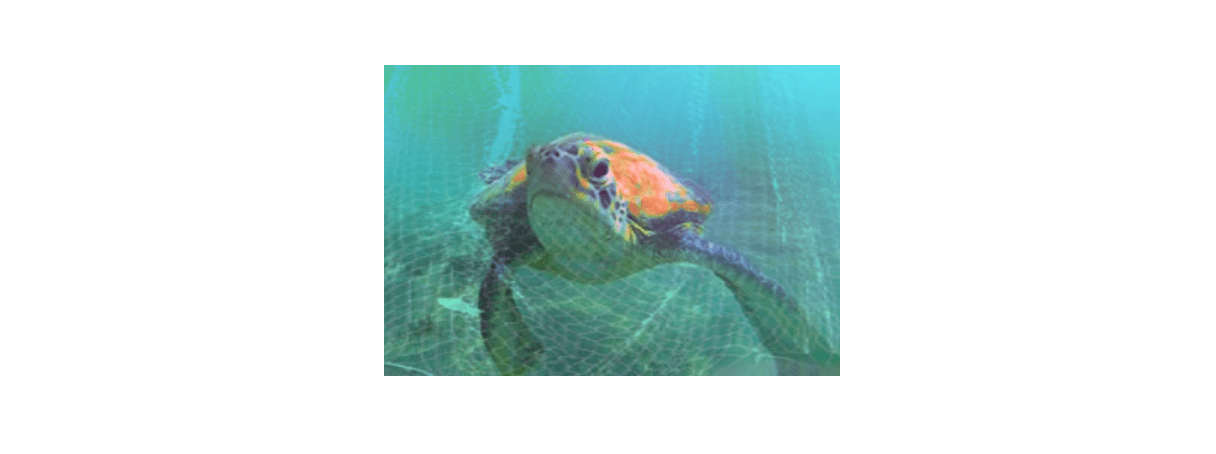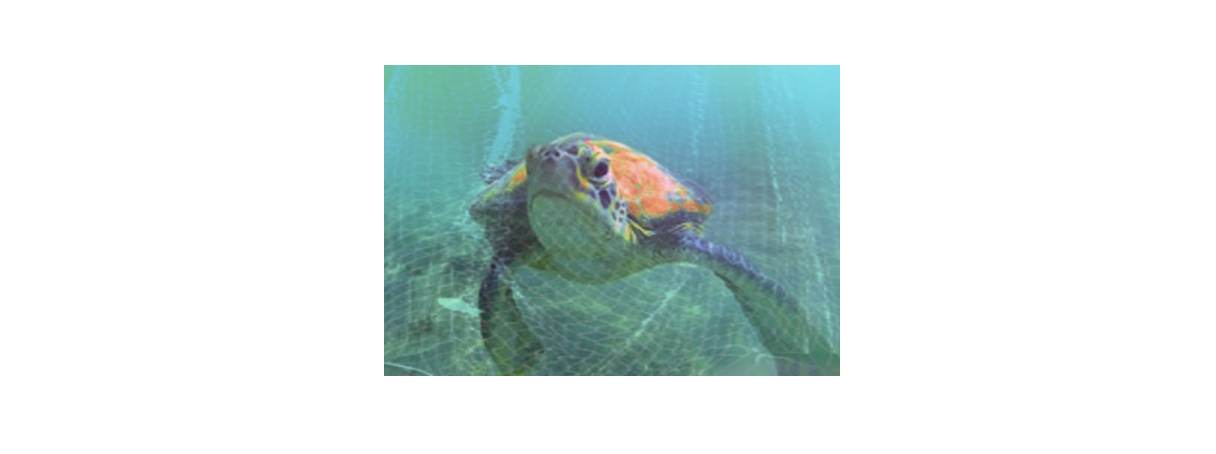What is ghost fishing? To what extent is ghost fishing an environmental problem?
Ghost fishing is fishing gear that has been lost, dumped or abandoned in the seas and oceans.

Ghost fishing is presently a global concern. According to a report by the Food and Agriculture Organization and the UN Environment Program, 640.000 tons of abandoned nets, lines and other fishing gear are spread across the world’s oceans, comprising up to a 10 % of oceanic litter [https://news.un.org/en/story/2021/05/1092912]. The European Union also estimates that abandoned fishing gear represents 27% of the waste left on the European beaches.

The abandoned fishing gear float on the surface of the sea, collecting large amounts of organisms, and eventually sink under their weight. They can also wrap themselves on shipwrecks, cliffs or rocks, trapping marine animals, maiming, drowning or starving them. The dispersed nets kill millions of fish, mammals, turtles, large cetaceans and birds, not to mention the damage caused to coralligenous and benthic organisms. Besides being a threat to the marine ecosystem, abandoned fishing gear represent an enormous damage to the fishing communities, since it has been estimated that they reduce the stock of fish available by up to 30%.
Until the 1950s and 1960s, nets were commonly made of hemp or cotton, both of which slowly biodegradable in the soil. Subsequently, the use of synthetic polymers, particularly of nylon, prevailed. Fishing nets made of nylon can remain undegraded in the water for hundreds of years. Moreover, when the fishing gear breaks apart, further problems arise as marine animals eat plastic debris.
How can ghost fishing be contrasted?
To contrast the problem of ghost fishing, several volunteer organizations arose spontaneously with the aim of raising awareness among civil society and governments on this issue. Among them, the Ghost Diving organization (https://www.ghostdiving.org/) and the Healthy seas organization (https://www.healthyseas.org/) have specialized in the removal of lost fishing gear and other marine debris since 2009. The Ghost Diving concept has spread to 16 countries in the world where local diving teams identify as Ghost Diving chapters. Several local research and recovery projects for abandoned networks, such as the "Life-ghost" project (http://www.life-ghost.eu/index.php/it/ ) which involved mapping and recovery of ghost nets in the Gulf of Venice, with an in-depth analysis of the impacts have also been funded.
Some also propose to implement the geolocation of fishing nets and at the same time facilitate the adoption of conscious management practices by fishermen. Once fishing gear have been collected, it is obviously necessary to identify the most suitable procedures for their recycling and/or disposal.
Can fishing nets be made of biodegradable plastics?
“Biodegradable netting may become a feasible alternative to conventional nylon netting and can contribute to reducing the duration of ghost fishing” Seonghun Kim and coworkers stated in their article “Use of biodegradable driftnets to prevent ghost fishing: physical properties and fishing performance for yellow croaker”, published in 2016 on Animal Conservation [1]. The long-term degradation products of biodegradable polymeric materials (bioplastics), that is, carbon dioxide, methane, water, have indeed no impact on marine ecosystems, whereas undegradable polymeric materials ultimately decompose into microplastics. Kim and coworkers developed a biodegradable blend of 82% polybutylene succinate (PBS) and 18% polybutylene adipate-co-terephthalate (PBAT) as a material for making fishing nets. They investigated the physical properties and degradability of the biodegradable monofilament and compared the fishing performance of conventional nylon nets with that of the newly developed biodegradable PBS/PBAT plastic blend. In the wet state, biodegradable monofilament has been shown to be approximately 1.5 times stiffer than nylon monofilament. The fishing performance of the biodegradable and conventional nylon nets were similar. Furthermore, the biodegradable monofilament started to be degraded by marine organisms after 24 months in seawater. However, the authors themselves declare aware of the fact that much research must be carried out before being able to propose the use of biodegradable materials as substitutes for the undegradable nylons for the production of fishing nets. The challenge is still ongoing!
References
S. Kim, P. Kim, J. Lim, H. An, P. Suuronen. Animal Conservation, 2016, 19, 300-319.